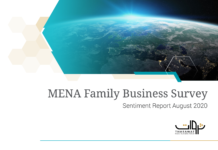It goes by several names, operates in an infinite number of ways and has the undeniable potential to revolutionise the working world. The freelance economy or gig economy as it’s sometimes known denotes the transition from full-time salaried employment to a self-employed job rate model for a significant portion of the workforce.
In the United States, 36 per cent of working American’s or 57.3 million people earn an income through freelancing. They account for approximately $1.4 trillion in annual revenue representing an increase of almost 30 per cent compared to the previous year. Interestingly, North America, at 4.1 per cent, is the region with the fewest number of freelancers per capita. According to the 2018 Payoneer Freelancer Income Survey, Europe has the highest percentage of freelancers at 35.5, followed by Latin America with 29.2 per cent, then Asia at 28 per cent and Africa with 10.1 per cent.
According to Stephane Kasriel, CEO of the freelancing platform Upwork and co-chair of the World Economic Forum’s Council on the Future of Gender, Education and Work, there is remarkable potential in the trend towards a freelance economy.
Kasriel posits, “Professionals who choose to freelance make this choice knowing that, as their own boss, they are in control of their destiny. Freelancers, therefore, think more proactively about market trends and refresh their skills more often than traditional employees.”
As the CEO of a web-based freelancing platform, there is a clear precedent for his optimistic outlook, however, data exists to give credence to his claim. The freelance workforce is growing three times faster than the overall workforce in the United States. In 2017, the use of online freelancing platforms increased by 26 per cent, according to a report by the Oxford Institute.
Business professionals are taking note: “As the CEO of Mondo, a high-end tech and digital marketing staffing agency for both short and long-term talent, I continue to see the demand for freelance and contract-based talent increase year after year, from the medium to large size businesses we partner with,” Tim Johnson told Forbes this past June.
While the assumption could be made that this increase is involuntary, the result of a shrinking full-time workforce, a recent study showed that 63 per cent of respondents said they are freelancing by choice rather than necessity – this figure was 53 per cent last year.
The economic implications of a continued transition towards a freelance economy will be far-reaching but difficult to predict.
What is a Modern Freelancer?
Modern freelancing is difficult to define. Previously, the gig-based model was limited to a small number of professions: independent contractors with trade skills such as plumbers and electricians or creative professionals like photographers and graphic designers with a roster of regular clients.
The spectrum has widened significantly. Conventional taxi drivers were employed by cab companies, whereas the Uber drivers of today are independent contractors. When it comes to skilled labour, educated professionals like advertising creatives, business consultants, and various technical experts comprise a segment of freelancers often referred to as the expert economy.
Many are eschewing traditional employment and the constrictions that come with it because freelancing has the potential to be both lucrative and flexible. Talented freelance coders, for example, can earn well in the comfort of their own homes whenever it fits their schedule.

The Rise of the Supertemp
For obvious reasons, freelance expansion coincides with the widespread adoption of personal email and the recent ubiquity of internet access. From 2000 to 2014, the number of freelancers in the workforce multiplied by a factor of five. The rise of online freelancing platforms, which streamline interactions between businesses and freelancers has made the transition from traditional employment to self-employed freelancing even smoother.
Upwork is easily the industry leader in this field but is only one of many options. Generally, these platforms are tailored to specific industries or segments of the economy. Scripted finds freelance writers for corporate clients who need professional content writing while TaskRabbit puts casual employers in touch with localised cleaners, movers and labourers. Without these platforms, it is doubtful we’d see the kind of transformation that is currently unfolding.
Communication has never been more fluid: the advent of technologies like Skype, FaceTime, and other messaging apps enable teams to stay connected regardless of location. When it comes to payment, apps such as PayPal and Payoneer have circumvented traditional banks by allowing hassle-free international transfers.
Ostensibly a result of the burgeoning economy’s reliance on new tech, the average age of the modern freelancer is relatively young – the opportunity for development is immense. Freelancing allows young people from all over the world to access marketplaces they hitherto would have been excluded from, and the outcome is often favourable for both sides. Lower overheads can mean higher profit margins for employers as well as freelancers.

[ms-protect-content id=”4069,4129″]
The Future of Freelancing
Tim Johnson states, “The emergence of online platforms for freelancers along with staffing agencies that specialise in short-term talent needs have made finding immediate freelance talent possible, which in turn has opened the door for larger companies to integrate freelance-based hiring strategies — the final hurdle to large-scale adoption of freelance professionals.”
Major corporations are starting to experiment with freelance labour: Samsung recently staffed a project using only freelancers through Upwork. The results are encouraging, Samsung recorded a 60 per cent reduction in cost and a similar decrease in administrative time.
New platforms are emerging that allow larger companies to hire, manage, and pay freelancers indicating that Samsung is not the only multinational aiming to capitalise on the trend. Transitioning might even become obligatory when it comes to sustaining growth.
Almost half of all millennials have embraced freelancing, and this might prove to be a disruptive force for Fortune 500 companies – firms may soon have to overhaul their recruiting and hiring strategies to secure the best and brightest.
Young talent is moving towards rapidly expanding and highly competitive fields. According to the 2017 Upwork survey, the most in-demand skills were artificial intelligence, Instagram marketing, machine learning and brand strategy. Among the fastest growing niche sectors that year were robotics, blockchain, bitcoin and augmented reality – all professional services available on freelancing platforms.
Some estimate that by 2027, freelancers will enjoy a majority in the global workforce. Whether or not this happens, there is a clear trend: the freelance economy is currently enjoying a period of rapid expansion and there’s no going back. Even if companies don’t see a reason to engage freelancers right away, they should at least familiarise themselves with this trend and the wide array of possibilities it offers.
[/ms-protect-content]














